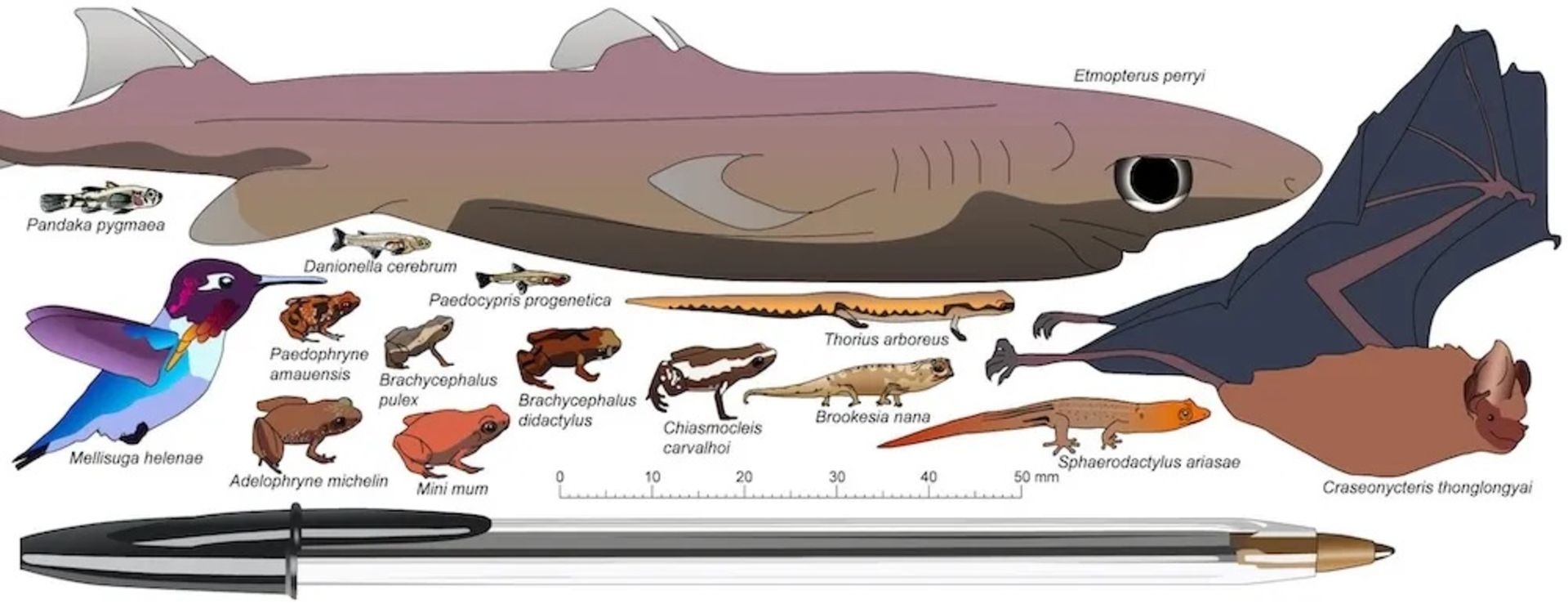
The world’s largest animals usually receive the most attention, but some biologists believe that the smallest animals are equally or even more well studied. Now, thanks to a nearly $1.66 million grant from the European Research Council, experts will soon begin studying the tiny but biologically fascinating creatures on an unprecedented scale.
According to an announcement on September 5, Mark Scherzcurator of reptiles at the Natural History Museum of Denmark and assistant professor at the University of Copenhagen, will spend the next five years working on a new project called Jamnai (Genomics of Miniaturization in Vertebrates).
In the Jumnai program, Scherz’s team will examine how the evolutionary downsizing of animals such as frogs (Brachycephalus pulex), the pygmy pygmy fish and the pig-nosed kitty bat have been able to pack all their biological components into such small bodies without compromising their performance or health. By doing this, experts can learn how genetic optimization and improvement unfolds in some truly overlooked species.
“Big animals often get our attention,” Scherz says. But I think it’s equally amazing how nature managed to shrink those exact vital organs and pack them into a frog less than a centimeter long. “Now, we know strangely little about how that happens, and I want to change that.”

Photographer: ark Scherz
As Scherz explains, previous studies that looked at the genomes of miniature animals showed that as the animals evolved to smaller sizes, “a kind of purge and innovation” took place. Although much of this simplification occurs in the deletion of what is sometimes called “junk DNA,” some changes occur in other genes as well. The latter group is what Scherz hopes to learn more about in the next few years.
In the past, many evolutionary biologists used a theory called Cope’s Law, which assumed that species tended to grow larger as they evolved. Now, experts know that’s not always the case.
“Animals can’t just keep getting bigger and bigger,” Scherz says. At times, the physiology of the exchange of heat, water, and oxygen imposes limits, as does gravity. In this way, in order for there to be a process of increasing size at all, there must be stages in which the size of the body decreases.”
Contrary to Cope’s law, the main innovations actually happened in smaller animals, Scherz argues. There’s basically a copy of every vital organ in your body in the frog, the world’s smallest vertebrate, discovered in Brazil last year. All the same biological functions that keep this seven-millimeter amphibian alive can be found in humans, elephants, as well as blue whales, the largest animals on Earth. But the frog performs all the functions using very little energy.
The frog frog has all the vital biological functions of whales
“Everybody’s paying attention to the blue whales and the elephants,” Scherz says. Ask any child who can tell you about the largest land mammal and the largest sea mammal and the largest dinosaur that ever lived. But getting bigger and bigger is not a big deal. It is a much more impressive feat that [عملا] Everything that is in a twenty-three-ton blue whale can be compressed into a seven-millimeter package.”
Sherez believes that his findings will have many applications in the biomedical, bioengineering and biotechnology industries. “Bioengineering and biotechnology are constantly looking to nature for inspiration and to show what’s possible, and at a time when technology itself is becoming increasingly miniaturized, it will be important to look to nature’s prototypes of the complexity it makes possible at very small sizes,” he says. “
Mini mum is one of the smallest frogs in the world.







